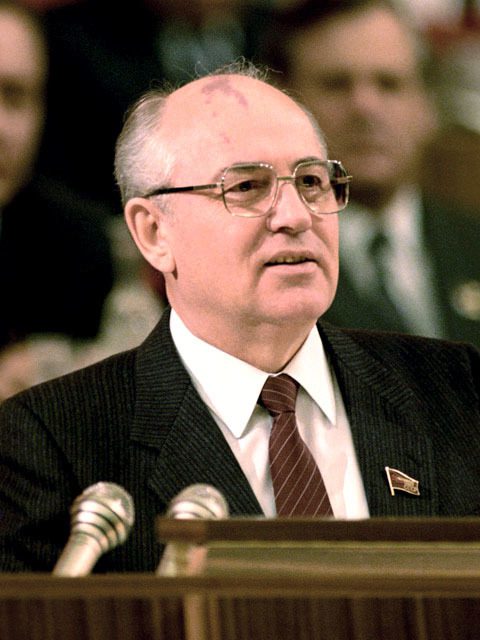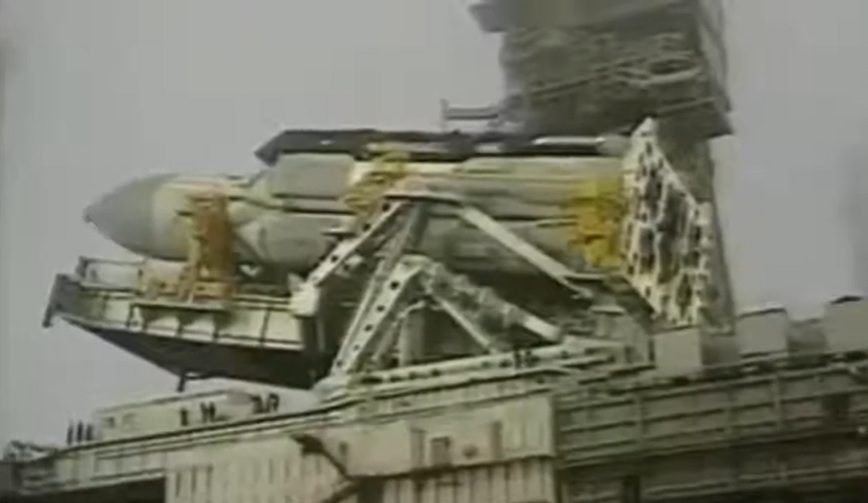The death of former Soviet leader Mikhail Gorbachev on 30 August at the age of 91 prompted tributes to him from around the world in his role as a peacemaker and promoter of democratic freedoms during the Cold War.
After Leonid Breznev finally died, followed by short reigns, both ending with natural mortality, of Andropov and Chenyenko, the younger Mikhail Gorbachev rose to become Head of State of the Soviet Union in 1988. And yet as he surveyed the moribund economy, and the amount of money that was being ploughed into the Soviet defence programme, he knew that something must be done. He began a process of Perestroika (reconstruction) and glasnost (openness) with a view to improving the Soviet state’s economics and prospects while at the same time improving freedoms and introducing some basic democracy. His openness and popularity also allowed him onto the streets to reach the Russian people. It is said that the shock of the Chernobyl nuclear disaster in Ukraine encouraged his efforts at reform.
The Warsaw Pact’s member states also took their lead to the point that there was an effective revolution in East Germany and the Berlin Wall was torn down. The “Genie was out of the bBottle” by this stage, and the demand for freedom and increased nationalism within the Soviet Republics led to calls to break away. It was at this point that a backlash within the Communist party led to an attempt at a coup. The coup and a kidnap of Mikhail Gorbachev and his wife Raisa failed and he was briefly returned to power. However, even Russia, led by Boris Yeltsin wanted to be free of the Soviet State and the Soviet Union was, against Gorbachev’s wishes, dissolved in 1991, with Gorbachev losing power. Gorbachev lost his wife in 1999 and kept a low profile albeit emerging to criticise Putin from time to time. He declared himself against the current war in Ukraine, although he supported the annexation of Ukraine which was originally Russian and ceded to Ukraine by Soviet Leader Nikita Khrushchev in 1954.
The subsequent maladministration by Russian Boris Yeltsin with its sale of several state industries to individuals making them eventual superrich oligarchs, and the appointment of former KGB officer Vladimir Putin as his Prime Minister, sowed the seeds of the current Putin regime which has stealthily took down freedom and democratic rights. Putin and his supporters have publicly decried the break up of the Soviet Union as a disaster.
His real achievements however lay in world peace. After previous visits to UK Prime Minister Margaret Thatcher had broken the ice, this bore further fruit with summits to reduce nuclear weapons with President Reagan. These led to the START Strategic Arms Reduction treaties the first of which was signed in 1991 associated inspection rights by each side. Nevertheless, Gorbachev’s antipathy to the US Strategic Defence Initiative – later dubbed “Star Wars” – a system aimed at shooting down ballistic missiles with space-based interceptors and beam weapons, was evident.
However, it was later revealed that the Soviet Union has for years been working on its own “Star Wars” . One of the projects he inherited was the Polyus-Skif programme. This programme was planned to lead large scale laser battle satellites dubbed Skif-D which would use a directed energy lasers to shoot down ballistic missiles. While impracticality of this, and concerns over the President Reagan’s announcement in 1983 of the US “Star Wars” system, meant that the targets were now to be satellites for this new system. In the end, even USA realised that a space based missile and space defence system did not have the technology readiness state to make it practical.
Nevertheless, one flight of the Polyus-Skif prototype was attempted. It ended in failure during launch on 15 May 1987. It failed to enter Earth orbit due to a faulty inertial guidance on the satellite which caused the failure of orbital injection of the Polyus-Skif transfer stage/payload assembly. The craft had been mounted upside down to ameliorate launch vibration. On release the Polyus/Skif stage was to rotate 180 degrees before its engine was fired. Unfortunately, the assembly rotated 720 degrees and the engine was fired with the assembly pointing towards Earth. The guidance error was caused by a programming error, the TKS tug could not orient the Polyus stack correctly to put itself into orbit. The assembly burned up in the atmosphere.
The Soviet Union was cash strapped and no further flights were made. As it was, the Soviet Union could hardly afford its own current civilian and military space programme. The US Space Shuttle, with its ability to launch heavy payloads to low Earth orbit, had already triggered the Soviet Union to build its own space shuttle called Buran which was launched by its giant Energia carrier rocket. That was until Gorbachev and his space experts realised that it could not be afforded. Buran only flew once in an uncrewed condition on 15 December 1988 – the only other launch of Energia rocket. Instead, the much cheaper to operate Soyuz rocket with its Soyuz spacecraft soldiered on into the modern era, albeit now under Russian rather than Soviet control.
We give our salute to Mikhail Gorbachev for all he did for freedom and peace (he won the Nobel Peace Prize in 1990) and give our condolences to his family and friends.
The full story of the Polyus-Skif programme is in the Air & Space Magazine below:
Soviet Star Wars | Air & Space Magazine| Smithsonian Magazine







